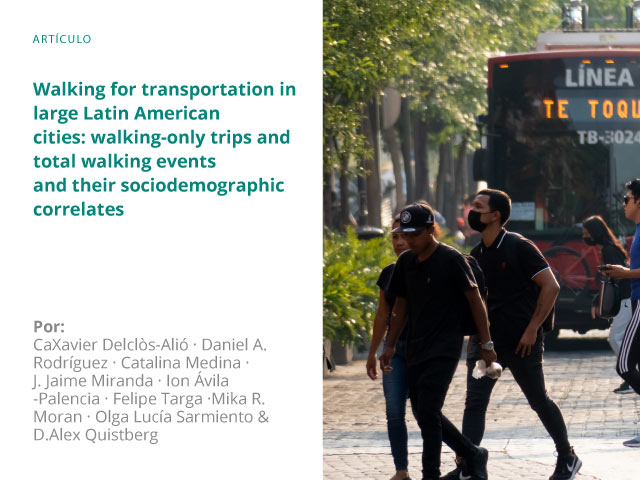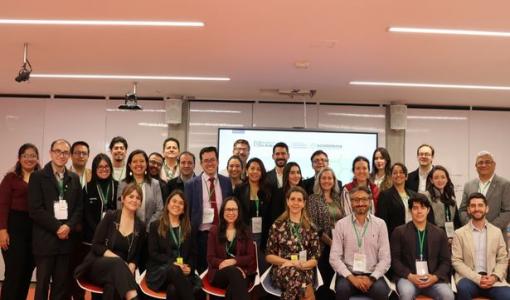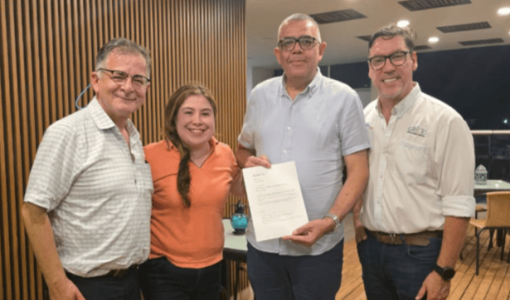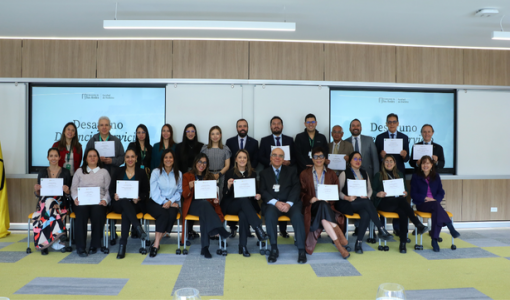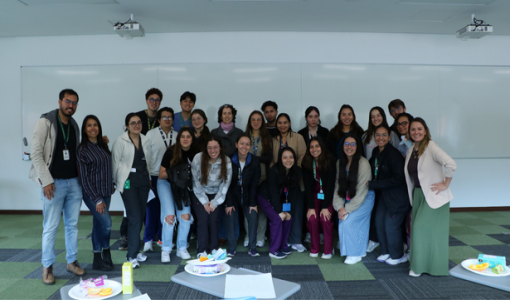[Artículo]
Los invitamos a leer el siguiente artículo que contó con la participación de la Dra. Olga Lucía Sarmiento
Walking for transportation is a common and accessible means of achieving recommended physical activity levels, while providing important social and environmental co-benefits. Even though walking in rapidly growing urban areas has become especially challenging given the increasing dependence on motorised transportation, walking remains a major mode of transportation in Latin American cities. In this paper we aimed to quantify selfreported walking for transportation in Mexico City, Bogota, Santiago de Chile, Sao Paulo, and Buenos Aires, by identifying both walking trips that are conducted entirely on foot and walking events involved in trips mainly conducted on other means of transportation (e.g. private vehicle, public transit) among individuals ≥5-years old. We show how walking-only trips account for approximately 30% trips in the analysed cities, and we evidence how the pedestrian dimension of mobility is largely underestimated if walking that is incidental to other transportation modes is not accounted for: when considering all walking events, we observed an increase between 73% and 217% in daily walking time. As a result, we estimated that between 19% and 25% of residents in these cities meet the WHO physical activity guidelines solely from walking for transportation. The results of the study also suggest that the promotion of public transportation in large Latin American cities can especially help certain population groups achieve the daily recommended levels of physical activity, while among low-income groups accessibility and safety seem to be the key challenges to be addressed

